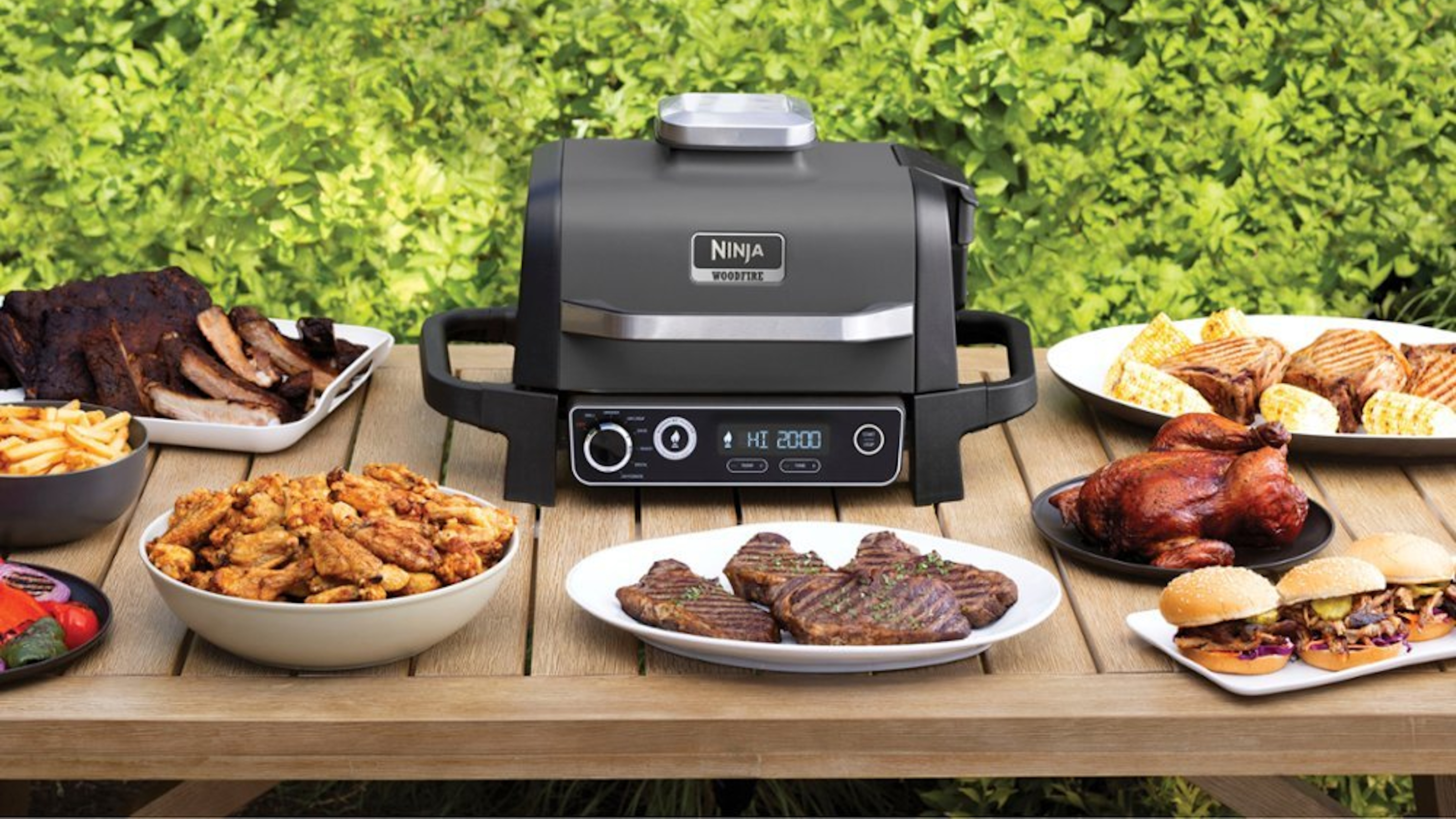Is there a signal more powerful that we’re emerging from winter than the sizzle of meat hitting a hot grill? We think not. But in today’s day and age, grilling goes beyond tossing some charcoal in a circular grill, a little lighter fluid, and a match to get the flames going for the grill. We’ve got choices now! There are gas grills, the aforementioned charcoal grills, smokers, griddles, and electric grills all to choose from. Here our primary focus will be on gas grills vs electric grills – their advantages, disadvantages, and how to choose the right one for your needs.
When you think of grilling, the picture that permeates your mind is most likely a gas grill. Gas grills are the traditional champions of backyard BBQs. They offer quick heating, high temperatures, and the classic grill mark look and taste.
Electric grills, on the other hand, are more closely associated with indoor grilling. You forgo the propane and flames for a quickly heated, and evenly heated surface. Just plugin the grill into your nearest power outlet, and you’re good to go. Convenient heat, and no hassling with propane refills.
So, what’s the right choice this coming summer? We dive into the affordability, features and performance of each, as well as bring in some additional experts to help guide you along the way. Read on to find out.
Gas Grills vs. Electric Grills: Price and value
Gas grills are affordable. You can get into a gas grill for a couple hundred dollars. The Deskslpore 4 Burner Gas Grill is a prime example. More high-end gas grills from name brands like Weber, Char-Griller and Charbroil can be found for around $500, like this 3 Burner Charbroil Grill.
Propane is usually the other ongoing expense. Getting a filled tank for the first time is about $50, but refills and exchanges are half of that going forward. For some, one propane tank can last all summer, depending on how much you grill.
Electric grills have a fairly broad price range. For instance, this Cuisinart Indoor/Outdoor Grill is just over $100. Yet, this outdoor Char-Broil Electric Grill is upwards of $500. The cost will largely depend on features and surface area. The smaller the unit, the more affordable. And of course, you don’t have to worry about the recurring cost of propane here, so that’s a plus.

Mike Williams has been with Kenyon International for over 8 years, providing him with extensive knowledge of the sales and manufacturing world. Kenyon’s products are all locally handcrafted, with the company itself being one of the largest manufacturer in North America of two burner ceramic glassware cooktops and electric grills.
Gas Grills vs. Electric Grills: Features and functions
Gas grills typically have between two and four burners, depending on the amount of surface area available to cook. You can expect additional features such as a warming rack, built-in thermometer in the hood, and even side burners that are great for cooking extras like vegetables. Most gas grills are easy to ignite as well. One push of an ignitor will start the grill.
And of course, the reason why you get a gas grill in the first place, is the direct flame that provides those classic flamed-char grill marks and taste.
With an electric grill, there is no gas, and in turn, no flames to cook your food. Without gas, and as the name suggests, plugging your grill into a wall outlet quickly heats up the surface. Jeremy Pike, lead recipe creator for AngryBBQ.com said, “One of the most common reasons people purchase electric grills is due to restrictions where they live. Most apartments won't allow you to have a gas or charcoal grill due to concerns about fire safety. But you can usually purchase and use an electric grill. Electric grills do tend to be more easily portable, too.”
In addition to the convenience in not dealing with gas, you also get precise temperature control. Mike Williams, VP of Kenyon said “Electric grills have rapid preheat times, precision temperature control, and even heat distribution.”

Much of Brian Gurney’s life over the past decade has been on the road. Since 2011, he and his wife Shelly have traveled across the country, and even the world, bringing their culinary creations to barbecue competitions of all sizes. The BAD BONES BBQ team has won 19 Grand Championships, 11 Reserve Grand Championships and many more.
Gas Grills vs. Electric Grills: Performance
When it comes to the types of food each can cook, Pike explains there isn’t really a difference between the two types of grills. “Both gas and electric grills can be used to cook the same foods. And a number of electric grills I've seen have ridges, so you can even reproduce grill marks. You can cook hot dogs, hamburgers, and chicken on an electric grill just as you would a gas grill.”
Both can get hot quickly each reaching temperatures over 500°F. This is great for searing burgers, hot dogs, steaks, pork and chicken. Brian Gurney, Brand Ambassador for Bear Mountain BBQ believes that when it comes to the quickest heat-up, it’s hard to beat the convenience of an electric grill. “The only advantage to an electric grill is for quicker cooks like searing a steak. It’s fast and convenient. No filling up pellet hoppers or getting propane. Electric grills heat up quickly, and get hotter.”
But if you’re looking for that smokey flavor, neither will wet your pallet, at least, not without additional equipment. “The only difference between gas and electric is the fuel source. Both are convenient but electricity is easily accessible. Neither will impart smoke to your grilled meats and vegetables but will sear meats nicely,” said Gurney.
Pike believes that even though electric grills can cook the same food, gas grills still rear other advantages. “You can't use an electric grill during a power outage unless you have a generator. One advantage that a gas grill has is that you can use a [additional] smoker box or tube filled with wood chips/pellets to add some wood smoke flavor to whatever you're grilling,” said Pike.

Jeremy is the lead reviewer and recipe creator for AngryBBQ.com. Jeremy loves to smoke meat and grill in his backyard, test new grills and equipment, and check out all the latest info in the barbecue world.
Gas Grills vs. Electric Grills: Care and Maintenance
Gas grills require regular maintenance, but are rather easy to maintain. You just need to clean the grates after each use and empty the grease tray. And it’s always a good idea to check gas lines and connections periodically to make sure you don’t have any leaks. Spraying soapy water on lines and looking for bubbles is a quick and easy way to ensure there are no leaks. Finally, at the end of the season, we recommend a big deep clean of your gas grill, to remove all the ash and gunk below the burners on the floor of the grill.
Electric grills are easier to maintain. Most models feature non-stick grates that can be wiped clean or even removed for washing. Without burners or gas lines to worry about, maintenance primarily involves keeping the grill surface clean and checking the heating elements for wear.
Both are incredibly easy to maintain, but without having to change out propane tanks, the slight edge goes to electric grills.
Gas Grills vs. Electric Grills: Which is Right for You?
If you’re a traditionalist, and you don’t think meat can be called “grilled” unless it is touched by flame, then you’re more than likely team gas grill. But if you’re looking for precise cooking temperatures and consistency, electric grills aren’t a bad choice either.
Of course, you’ll want to consider your living situation as well. If you’re in a situation where you can have an outdoor gas grill with open flames, a gas grill is a classic choice. As Pike mentioned above, having a gas grill isn’t an option for everyone. If you need a grill for an apartment, condo, or in some cases, indoor use, an electric grill is the way to go.
Ultimately, the best grill is the one that fits your needs. Either way, both grills provide quick heating for quickly searing meats. Is anyone else hungry?

